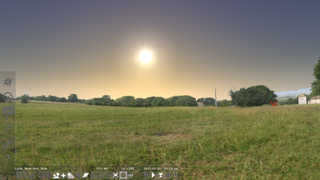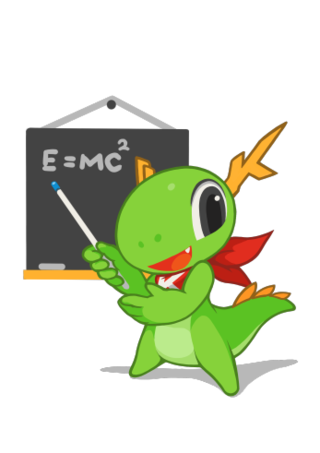
KStars is a freely licensed planetarium program using the KDE Platform. It is available for Linux, BSD, macOS, and Microsoft Windows. A light version of KStars is available for Android devices. It provides an accurate graphical representation of the night sky, from any location on Earth, at any date and time. The display includes up to 100 million stars, 13,000 deep sky objects, constellations from different cultures, all 8 planets, the Sun and Moon, and thousands of comets, asteroids, satellites, and supernovae. It has features to appeal to users of all levels, from informative hypertext articles about astronomy, to robust control of telescopes and CCD cameras, and logging of observations of specific objects.

Stellarium is a free and open-source planetarium, licensed under the terms of the GNU General Public License version 2, available for Linux, Windows, and macOS. A port of Stellarium called Stellarium Mobile is available for Android, iOS, and Symbian as a paid version, being developed by Noctua Software. These have a limited functionality, lacking some features of the desktop version. All versions use OpenGL to render a realistic projection of the night sky in real time.

Celestia is a real-time 3D astronomy software program that was created in 2001 by Chris Laurel. The program allows users to virtually travel through the universe and explore celestial objects that have been catalogued. Celestia also doubles as a planetarium, but the user is not restricted to the Earth's surface, like in other planetarium software such as Stellarium. Celestia can display objects of various scales using OpenGL.

Free Pascal Compiler (FPC) is a compiler for the closely related programming-language dialects Pascal and Object Pascal. It is free software released under the GNU General Public License, with exception clauses that allow static linking against its runtime libraries and packages for any purpose in combination with any other software license.

Lazarus is a free, cross-platform, integrated development environment (IDE) for rapid application development (RAD) using the Free Pascal compiler. Its goal is to provide an easy-to-use development environment for programmers developing with the Object Pascal language, which is as close as possible to Delphi.

ASCOM is an open initiative to provide a standard interface to a range of astronomy equipment including mounts, focusers and imaging devices in a Microsoft Windows environment.

HNSKY or Hallo Northern Sky is a free and open-source planetarium program for Linux, macOS, Microsoft Windows, and Raspberry Pi to simulate the night sky. It is provided with several non-English language modules, numerous astronomical catalogues, conversion utilities and tools, as well as several stellar databases.

PP3 is free software that produces sky charts, focussing on high quality graphics and typography. It is distributed a license based on the MIT License, but with this restriction added:
If you copy or distribute a modified version of this Software, the entire resulting derived work must be given a different name and distributed under the terms of a permission notice identical to this one.

The KDE Education Project develops free educational software based on the KDE technologies for students and parents. These educational software is translated into more than 65 languages, so that users can access them without any problems. The KDE-Edu project also provides free software educational to support and facilitate teachers in planning lessons.

XEphem is a Motif based ephemeris and planetarium program for Unix-like operating systems developed by Elwood C. Downey.

WorldWide Telescope (WWT) is an open-source set of applications, data and cloud services, originally created by Microsoft Research but now an open source project hosted on GitHub. The .NET Foundation holds the copyright and the project is managed by the American Astronomical Society and has been supported by grants from the Moore Foundation and National Science Foundation. WWT displays astronomical, earth and planetary data allowing visual navigation through the 3-dimensional (3D) Universe. Users are able to navigate the sky by panning and zooming, or explore the 3D universe from the surface of Earth to past the Cosmic microwave background (CMB), viewing both visual imagery and scientific data about that area and the objects in it. Data is curated from hundreds of different data sources, but its open data nature allows users to explore any third party data that conforms to a WWT supported format. With the rich source of multi-spectral all-sky images it is possible to view the sky in many wavelengths of light. The software utilizes Microsoft's Visual Experience Engine technologies to function. WWT can also be used to visualize arbitrary or abstract data sets and time series data.
Digital Universe Atlas is a free open source software planetarium application, available under the terms of the Illinois Open Source License, and running on Linux, Windows, macOS, AmigaOS 4, and IRIX.
Universe Sandbox is a series of interactive space sandbox gravity simulator educational software video games. Using Universe Sandbox, users can see the effects of gravity on objects in the universe and run scale simulations of the Solar System, various galaxies or other simulations, while at the same time interacting and maintaining control over gravity, time, and other objects in the universe, such as moons, planets, asteroids, comets, and black holes. The original Universe Sandbox was only available for Windows-based PCs, but an updated version was released for Windows, macOS, and Linux in 2015.

Skyglobe is an astronomy program for MS-DOS and Microsoft Windows first developed in the late 1980s and early 1990s, and originally sold as Shareware but now available as closed-source freeware. It plots the positions of stars, Messier objects, planets, sun and moon.
SpaceEngine is an interactive 3D planetarium and astronomy software developed by Russian astronomer and programmer Vladimir Romanyuk. It creates a 1:1 scale three-dimensional planetarium representing the entire observable universe from a combination of real astronomical data and scientifically accurate procedural generation algorithms. Users can travel through space in any direction or speed, and forwards or backwards in time. SpaceEngine is in beta status and up to version 0.9.8.0E, released in August 2017, it was and still is available as a freeware download for Microsoft Windows. Version 0.990 beta was the first paid edition, released in June 2019 on Steam. The program has full support for VR headsets.
Deep-Sky Planner is observation planning and logging software for amateur astronomers. It helps observers to determine where and when to view all types of celestial objects. It runs on Windows.
Nightshade is a simulation and visualization software for teaching and exploring astronomy, Earth science, and related topics. Its focus is on use in digital planetarium systems or as an educational tool, with additional features to allow it to also be used on desktop or laptop computers. It operates on Linux, macOS and Windows.

Gaia Sky is an open-source astronomy visualisation desktop and VR program with versions for Windows, Linux and macOS. It is created and developed by Toni Sagristà Sellés in the framework of ESA's Gaia mission to create a billion-star multi-dimensional map of our Milky Way Galaxy, in the Gaia group of the Astronomisches Rechen-Institut. Gaia Sky is a product of the outreach working group of the Gaia Data Processing and Analysis Consortium. The software is released under the Mozilla Public License.












